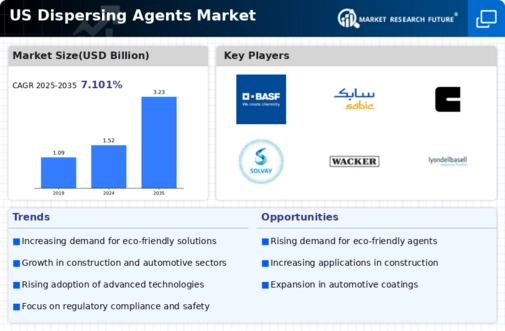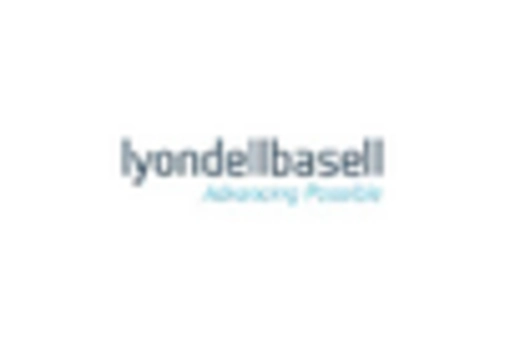The US Dispersing Agents Market is characterized by dynamic growth and substantial competition, driven by advancements in technology and a growing demand across various industries such as paints and coatings, plastics, and construction. Dispersing agents play a crucial role in enhancing the performance of materials by improving the stability and uniformity of mixtures, contributing significantly to product quality and efficiency.
The market is fueled by the increasing need for high-performance materials, along with stringent regulatory standards that influence product development and innovation. Industry players are continually focusing on expanding their product portfolios and geographical reach, while also improving sustainability practices in response to rising environmental concerns. This competitive landscape is marked by a blend of established corporations and emerging players vying for market share through strategic initiatives including collaborations, acquisitions, and investments in research and development.
Dow has established itself as a formidable player in the US Dispersing Agents Market by leveraging its extensive research capabilities and innovative technologies. The company offers a range of high-performance dispersing agents that cater to diverse applications, particularly in the paint and coatings industry. Dow’s strengths lie in its deep understanding of customer needs, enabling it to deliver tailored solutions that enhance the efficiency and performance of its clients' products.
Their robust distribution network across the United States further bolsters their market presence, allowing them to respond swiftly to customer requirements. Moreover, Dow's commitment to sustainability and environmentally friendly practices has resonated well with the evolving market demands, positioning it favorably against competitors.
Arkema has also made significant strides in the US Dispersing Agents Market, focusing on specialized polymers and additives that serve various industrial applications. The company's product portfolio includes innovative solutions designed to improve dispersion in a wide range of formulations, contributing to enhanced performance in end-use products. Arkema's strengths include its expertise in polymer chemistry and a well-established reputation for reliability and quality among its customers.
The company's strategic mergers and acquisitions have further solidified its market position, enabling it to diversify its offerings and enhance its technological capabilities. Arkema’s commitment to innovation is reflected in its continuous investment in research and development, aimed at introducing sustainable and high-performance dispersing agents that meet the evolving needs of the US market.
This proactive approach, combined with a strong emphasis on customer collaboration, allows Arkema to maintain a competitive edge in the marketplace.


















Leave a Comment